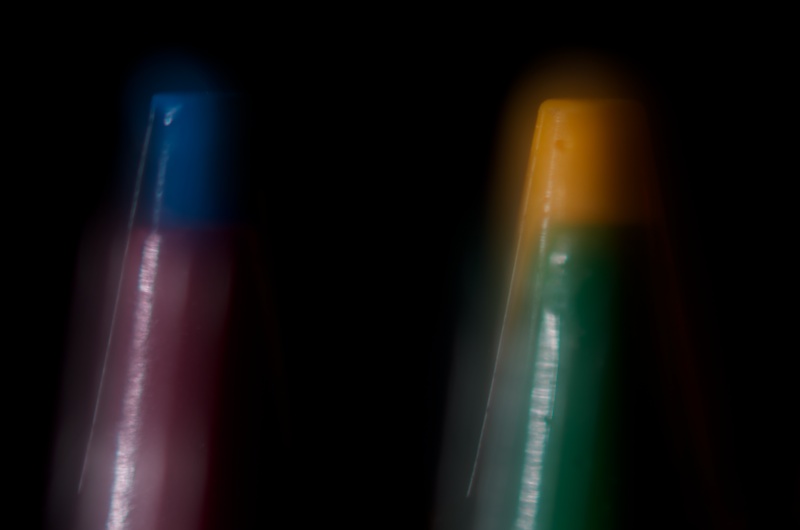Well, I could write a novel about today’s shoot, or I could just post the shot and its general setup notes…
There are about 15 interesting shots from today, some purposeful (like this one), some entirely accidental, and I started with a rather insane setup, so I may make an outtakes post later tonight or tomorrow (probably the latter…). If I go into more detail, I’ll just go on and on and on, so:
D7000, Nikon 75-150mm E Series, reversed, on 49mm of extension tubes, ISO100, two exposures, both 1/250th, both at f/3.5, with the SB700 at 1/2 power, with it’s diffusion panel down, hard camera left (maybe 80 degrees off axis (or is that 270?)).
Oh, and btw, this is straight out of the camera (with whatever RAW – jpeg conversion trickery Aperture performed, and with a conversion from Adobe RBG to sRGB). Good times.

I know this one :
http://www.dpreview.com
but I need a website that give me real RAW samples and have a feature search engine
http://www.cameralabs.com/ will provide image samples, and the reviews are very thorough, but there's no feature search that I'm aware of. http://snapsort.com/ has the feature search/sort, but no RAW samples.
I’m planning on buying a DSLR soon. I’ve read a lot of articles and tutorials online for a while now,but its time for me to have a hands-on experience while learning. But I want to make sure that I get a camera that I feel is right for me.
What kind of DSLR do you own? What lens?
I am currently looking at the Canon EOS T3i. Can you name a few cameras that I can compare reviews with?
Thanks!
I have a Nikon D7000 and a bunch of lenses.
The EOS T3i is in about the same class as the Nikon D5100, so that might be something to look at. I think there may be some similar cameras from Olympus, Pentax, Sony, and others, but I'm not familiar with any.
Before you buy one, try to get to a store and hold them first. Ergonomics are rather important.
The kit lens will be fine to start out with, and may be all you ever need. With the T3i, you might also think about a 35mm f/1.8 lens. This is a fabulous lens, and rather inexpensive. The Canon version is $100 US; the Nikon is about $150. These lenses will perform better in low light conditions than the kit lens, and be generally sharper and offer higher contrast and saturation than the kit lens, but they don't zoom.